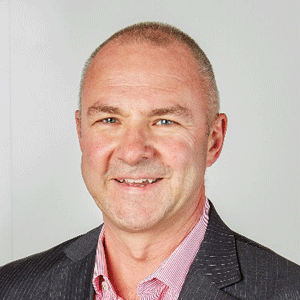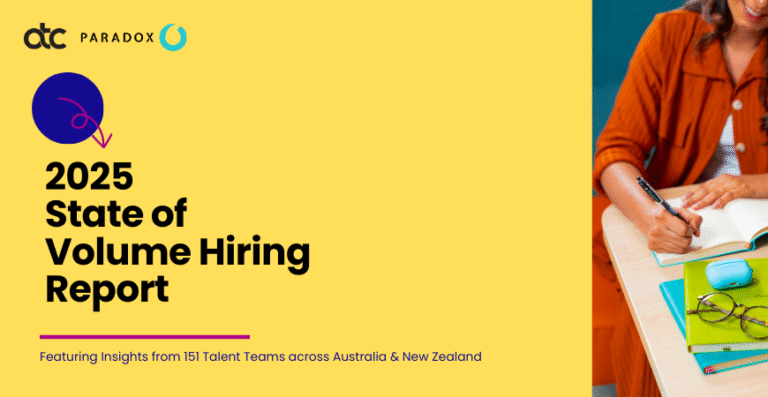The future of talent acquisition lies more in augmentation than automation, but TA teams need to obtain far more information about performance differentiators, according to an expert.
Talk of “build, buy, borrow or bot” strategies isn’t new – five years ago, Deloitte built a recruitment robot capable of end-to-end hiring – but a reluctance to fully trust technology has since caused a “fundamental” shift away from automation, says people and workforce planning strategist Stuart Elliott.

Stuart Elliott
Elliott, who spoke at the Australasian Talent Conference last November, says that when it comes to technology the amount of short-term change people experience tends to be far less than they expect, while the long-term change tends to be far more.
Driverless vehicles are a good example of this – the technology exists, but for the most part humans are still in control. Augmentation has been used to make cars safer, but a reluctance to “fully” trust technology persists.
“What we failed to understand is how quickly society shifts; how quickly human expectations change,” Elliott says. “What we’ve seen is a fundamental shift away from automation to augmentation.”
And because we’re still “a long way” from fully trusting technology, the question talent professionals should be asking is what aspects of the business their organisation can, should and will “own” – the “human side” – and what to then outsource.
The next evolution in talent: complete job redesign
The question will lead to conversations around strategic workforce planning and job design that are long overdue, Elliott says.
“At the moment our jobs are very much designed around the way things were 20 years ago,” he explains. The next evolution of the talent space is “complete job redesign” that asks “what is the human part of our business?”.
If a job is “just an aggregation of activities”, it can be broken apart and reassembled; some aspects can be augmented with technology, others can be outsourced and automated for cost savings and efficiency.
A starting point is the question: “what do we value?” and “what do our customers value?” Elliott says. “[Those values are] what we hold on to, because they’re fundamental to our brand, fundamental to our IP, and fundamental to our purpose.”
The problem is that organisations continue to put too much emphasis on technical capabilities and too little on human skills, he says.
“One of the things that constantly amazes me in our recruitment processes is that we far more often recruit for technical skills,” Elliott notes.
“But we know that the differentiator on performance is always around human skills – soft skills. The human skills that differentiate people are things like collaboration, creativity, being able to work across different strata in an organisation, getting people to work with you – they’re the things that we know when we look at who our high performers are, we’re constantly pulling up those people that display all these human skills.
“When we go and recruit for the job, we’re constantly assessing people on the technical skills… we need to understand more clearly the human skills in each of our roles.”
After the horse has bolted
This disconnect is clear in areas such as customer service; organisations tend to take an “after the horse has bolted” approach by putting their best people in charge of “mopping up” complaints, rather than on the frontline where they can manage issues as they arise and prevent them from escalating.
Elliott urges talent teams to look at key roles, talk to key managers, and say, “tell me about your high performers, what is it you’re seeing in your high performers that’s differentiating them?”, then build that back into the fundamental skills required for the role.
“I think we just tend to get things the wrong way round. We start with the baseline rather than feeding that information back and creating this virtuous loop… the information that identifies our high performers should be fed back to the TA areas because that’s what we’re saying we need.”
Customer-facing roles are just one example, he notes. It could be operations, processing, or other service areas. “It’s the same sort of thing. The information that the talent acquisition areas need is far more information about the performance differentiators, and especially the human characteristics of those people that are our high performers.”
Start small and prove your point
Another important question is whether the organisation is paying sufficiently for the skills it needs most. “There’s a bit of a false economy in bringing people in on what we call entry-level roles,” Elliott says, because the pay contributes to high turnover in first six-to-12 months. There might be a 10–20% salary saving, but it ends up being spent “time and time again, because you’re losing people”.
It’s difficult to convince the executive and board to pay more for higher quality people “because that’s just not what they’re used to doing; it is a fundamental shift”, he says.
“It can’t be done just by HR because HR are not going to win an argument with the business saying, ‘we think you should be paying 10% more for your general entry roles’. It’s a rethink of the whole process: of who do we recruit [and] why do we recruit them.”
The way into the conversation is to avoid “blanket approaches” at all costs, and “start small”, with an area where leadership might be prepared to invest.
“Most organisations have one leader somewhere who’s prepared to take a risk on that sort of thing,” he says. “Get your data, get your evidence, pilot something, trial something.”
If it works, it will lead others to ask, “why aren’t we doing that? Why can’t we do that?” Elliott says.
“That’s the ideal for any HR area or any talent area, is to have the business saying: we really like what you’re doing over there, can we try that as well?”
This article originally appeared here on Shortlist.net.au and has been reproduced with permission.






